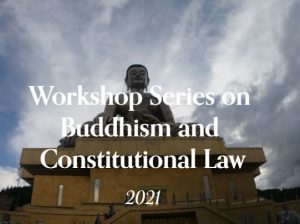Buddha’s Daughters is a diverse collection of teachings by some of Buddhism’s big names. Popular writers like Sharon Salzberg, Jan Chozen Bays, Tara Brach, and Pema Chödrön share their insights on grief, loss, delusion, and love. Every teacher in these pages is a woman, and therefore these individual teachings, bundled together, become a celebration of women’s leadership in transmitting the Dharma. Put together by Andrea Miller, an editor at Shambhala Sun magazine, the book “honors women teachers who are pivotal in shaping Western Buddhism.” Unlike Dakini Power, another recent volume on women in Buddhism, the focus remains on the teachings themselves rather than being on the biographical women who give them.
If her goal is to “de-genderize the dharma”—to expose wisdom as not exclusively male—then Miller has succeeded. The teachings in the book are broad-ranging: facing fear, conquering stress, mastering practices such as tonglen (in which the practitioner breathes in pain and sends out compassion and relief) and deep relaxation, serving our communities, going on pilgrimage, and even questioning why we practice in the first place. The women speak with authority and grace, as masters of their discipline. “Complacency
is the enemy . . . and you should not be afraid of the word enemy, because if you want to get somewhere, complacency is what is in your way: satisfaction with who you are,” writes Houn Jiyu-Kennett. This type of no-nonsense teaching highlights the confidence of the teachers, many of whom run their own abbeys or meditation centers and teach around the world.
Yet while their writing is clear and informative, it is also personal. Many writers share anecdotes from their lives and practices—exposing their own imperfections. Sister Chan Khong, who has worked for social justice alongside Thich Nhat Hanh, tells of a young man who asked her to marry him when she first began to serve. After she turned him down, he married someone else. “I felt very sad. Looking back at my sadness, I can see that it was not because I was losing him to another woman but because I realized I would never marry,” she says. This type of admission humanizes the teachers, taking them off the guru pedestal and placing them at the reader’s side—as fellow practitioners, struggling on the path. The entire book carries this sense of fellowship in a community that includes the reader. I found myself wondering if such openness is a characteristic of Western Buddhism, or if it is a particularly female sensibility which embraces a larger, more diverse sangha.
Many of the teachers are wryly funny and inject humor and humility into their Dharma teachings. “You’ve just done your first meditation retreat,” writes Carolyn Rose Gimian. “You go home and tell your family and friends about it: ‘Oh, it was fantastic. I had a really hard time for a few days, and my body hurt and I couldn’t control my thoughts, but then I had the most amazing (or insert other adjective) experience’ . . . What else are you going to say? ‘Nothing happened. It was a complete waste of time, but I want to keep doing this.’” The humor carries the knife-edge of wisdom. Cutting through our illusions, the jokes make us giggle with discomfort and exposure.
Along with this sharp humor, many of the writers use simple language, without jargon. These learned women are familiar with the complexities of Buddhist scripture, belief, and terminology. However, they choose not to conceal their wisdom in technical language; the articles are accessible and simply phrased. This provides a refreshing sense throughout of welcoming the readers into the Dharma rather than keeping them at bay.
Buddha’s Daughters is an easy book in which to skip around. You can pick up a short essay on homelessness here, a reflection on gratitude there. The pieces stand alone, isolated from each other thematically. The material comes from previously published essays and books, and is accompanied by a short biography of the teacher. Having the essays placed in a biographical context grounds them; it also accentuates the variety of lineages represented—from Zen to vipassana, from Vajrayana to teachings heavily influenced by Western psychology. There is real diversity in these pages—and that diversity provides an overview of women’s wisdom across various facets of Buddhism.
The second-hand nature of the material and the excerpted quality of the chapters makes linear reading unnecessary. This led me to wonder whom Miller intends the book to benefit. If the goal is to acknowledge women’s roles in Western Buddhism—to recognize something history has often overlooked—it works. However, I would have liked to see Miller go deeper. Except for the fact that each writer is female and most teach or taught in the United States, the book doesn’t have a central narrative thread. In her introduction, Miller writes, “[Different genders] are socialized differently and accorded different roles and privileges. In a myriad of ways, these factors determine how we experience the world and, by extension, how we experience the spiritual path. So, while both male and female teachers can speak on the universal human experience, women can also have a unique perspective that can be helpful to both male and female students.” At the end of Buddha’s Daughters, I wasn’t entirely clear what that “unique perspective” entailed—or how it differed in content or form from a male perspective. Miller alludes to the “universal” nature of the teachings in her introduction, but I found myself wanting a spine that could run through the whole volume—a central set of teachings that defined what it means to be a female teacher in the West.
The book almost acts like an academic sampler for those interested in exploring women’s voices. It’s not really a primer on Buddhism; the teachings are too disjointed for a raw beginner. However, it could serve as a portal for exploring more about a particular teacher who catches a reader’s attention. For an experienced practitioner, the book offers a return to many classic readings—the powerful opening chapter of Pema Chödrön’s When Things Fall Apart stood out—and a reminder of the central teachings of suffering, compassion, and service.
Buddha’s Daughters surveys and celebrates the women who are pushing Buddhism forward. But with gender as the only narrative thread, it seemed less an exploration of femaleness in Buddhism than simply a collection of excellent writing and wise teachings from some of the great leaders of our times.
Buddha’s Daughters by Andrea Miller was published by Shambhala Publications in 2014.












